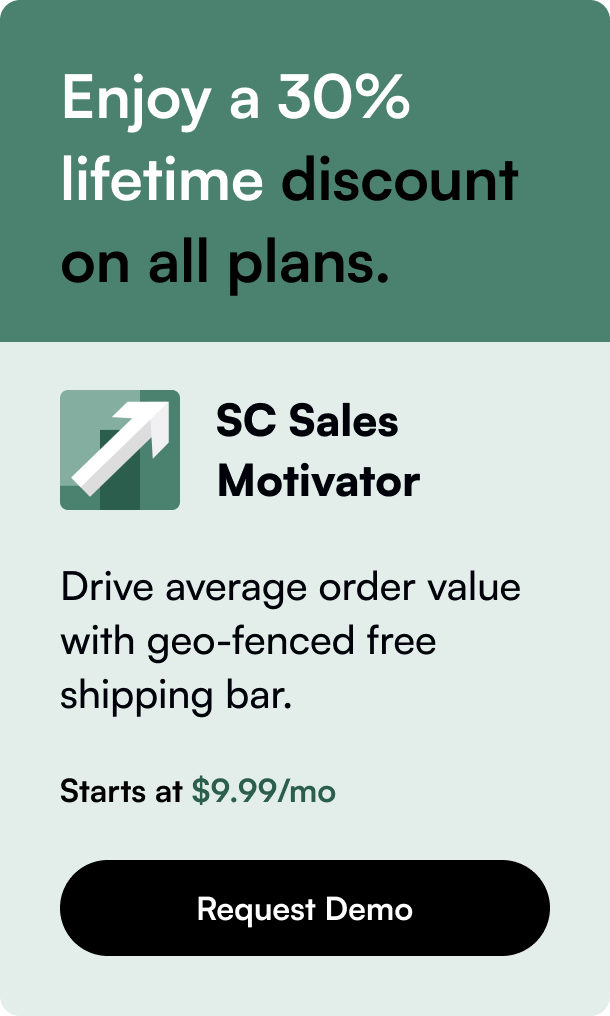Table of Contents
- Introduction
- Shopify Image Size Guidelines: A Deep Dive
- Comprehensive Optimization Strategies
- Conclusion
- FAQ Section
Introduction
In the dynamic realm of eCommerce, the visual representation of your products plays a critical role in attracting and retaining customers. A Shopify store, much like a physical storefront, needs to offer an enticing visual experience to visitors to convert them into customers successfully. But how do you ensure that your images are not just eye-catching but also optimized for performance? This article delves into the intricacies of Shopify image sizes, offering insights and strategies to elevate the quality of your store's visual content without compromising on load speed.
Capturing Your Audience’s Attention
Have you ever found yourself entranced by the stunning visuals of an online store, only to be turned off by sluggish load times or pixelated images? This common scenario underscores the importance of not only using high-quality images on your Shopify store but also optimizing them for size and speed. Choosing the correct image size and format is not just about aesthetics; it’s a crucial factor in improving site speed, enhancing user experience, and ultimately, boosting your conversion rates.
Why Image Size Matters More Than You Think
At the core of this optimization process lies a crucial consideration: image size. While visually rich content is undeniably critical for engagement, large, unoptimized images can significantly slow down your website, impacting user experience and SEO rankings. Balancing quality and performance demands a strategic approach to selecting the right dimensions and compression techniques for your images.
Shopify Image Size Guidelines: A Deep Dive
The art of selecting the ideal image size for your Shopify store begins with understanding the requirements and limitations set by the platform and balancing them with your thematic elements. Let's explore the key image types crucial for your store and the recommended dimensions for each.
Prime Dimensions for Key Image Types
- Product Images: Aim for a uniform square format (2048 x 2048 pixels recommended) for consistency and clarity, ensuring they are detailed enough for a zoomed-in view.
- Collection Images: Adopt a similar approach with a square format (1024 x 1024 pixels) to maintain consistency across your product collections.
- Slideshow and Banner Images: For captivating homepage visuals, a wider aspect ratio (ideally 1200-2000 pixels in width and 400-600 pixels in height) helps create an immersive experience.
- Blog and Promotion Images: Ensure your content marketing efforts are visually appealing with images optimized for quick loading and clarity (around 1200 pixels wide is a good standard).
Achieving the Perfect Balance: Quality vs. Speed
Optimizing your images involves more than just resizing. Compression plays a pivotal role in balancing quality and load speed. Tools like Shopify's built-in image editor and external compression services can help reduce file sizes without noticeable loss in quality. Furthermore, responsive design principles demand that your images look flawless across devices, adjusting seamlessly to different screen sizes and resolutions.
Comprehensive Optimization Strategies
Beyond just the technical aspects of image sizing, a cohesive visual strategy can significantly enhance your brand's appeal. Here are some actionable strategies:
- Consistency is Key: Use a consistent style and size for all product images to create a visually harmonious shopping experience.
- Leverage Compression Tools: Utilize image compression tools to minimize file sizes while maintaining quality. Shopify's platform offers built-in tools, but external options like TinyPNG can offer more control.
- Responsive Design: Ensure your images are optimized for both desktop and mobile views. Responsive images adjust according to the screen size, providing an optimal viewing experience.
- Testing and Analytics: Employ A/B testing and analytics to understand how your images impact customer behavior and loading times. Adjust your strategy based on real user data.
Conclusion
In the visually driven market of online retail, your Shopify store's success significantly hinges on how well you optimize your images for both aesthetics and performance. By adhering to the recommended sizes, employing smart compression techniques, and maintaining a consistent and responsive design, you can significantly enhance user experience, improve SEO, and, most importantly, increase conversions. Remember, the right images not only showcase your products but also tell the story of your brand, making optimization a pivotal step in your path to eCommerce success.
FAQ Section
Q1: What is the maximum image size allowed on Shopify?
A1: Shopify allows images up to 4472 x 4472 pixels in dimension and up to 20 MB in size. However, for optimal performance, it's recommended to use smaller sizes.
Q2: How can I optimize images for mobile devices?
A2: Use responsive images that automatically adjust to fit the screen size of the device. Also, consider the aspect ratio and file size to ensure fast loading times on mobile.
Q3: Do larger images affect my store's loading speed?
A3: Yes, larger images can significantly slow down your site's loading speed. It's crucial to compress images and optimize their size for a balance between quality and performance.
Q4: Can I use external tools for image optimization?
A4: Absolutely. External tools like TinyPNG and ImageOptim can offer advanced compression features to reduce file sizes without compromising image quality.
Q5: How does image optimization impact SEO?
A5: Optimized images load faster and improve the overall user experience, which are factors Google considers in its ranking algorithm. Properly named and sized images can also enhance your visibility in image search results.








